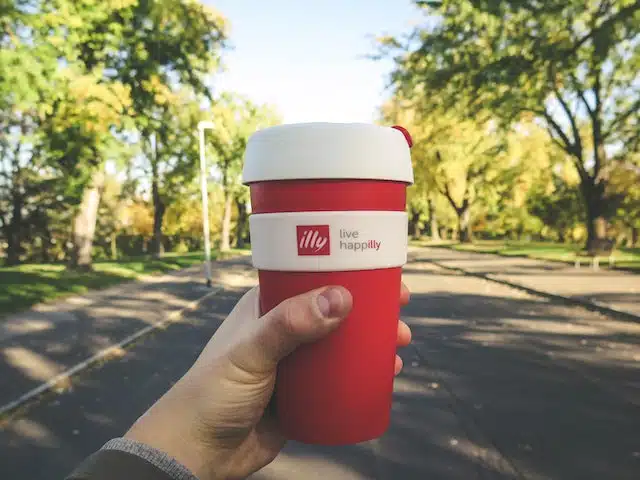What would your business be without its customers? The people who buy from you, whether you offer them a product or service, are really what keeps your business alive. Unfortunately, brand loyalty is something that many companies overlook. When you don’t focus on customer loyalty, you must constantly implement strategies to bring in new customers. This can be costly compared to relying on loyal customers to continue utilizing your services. Brand equity, which encompasses the overall commercial value of a brand based on its reputation among consumers, plays a crucial role in this dynamic.
What would your business be without its customers? In this post, we’ll consider how brand loyalty affects your business and the three levels you should be aware.

What is Brand Loyalty?
Brand loyalty arises from a blend of customer satisfaction, brand reputation, and emotional connections. Satisfied customers often return, but satisfaction alone isn’t enough.
- A strong brand reputation, achieved through consistent quality and positive experiences, is crucial.
- Emotional ties, like shared values or community, enhance loyalty.
- The Nike Swoosh and Coca-Cola logos symbolize a brand’s identity, deeply resonating with their customer base.
Understanding Brand Loyalty
The Essence of Brand Loyalty
Brand loyalty is vital for business success, reflecting customers’ consistent preference for one brand over others, even with alternatives available. It’s a testament to their commitment and ongoing patronage, driven by more than just product quality.
Building Lasting Customer Relationships
Creating brand loyalty goes beyond offering excellent products or services; it involves nurturing enduring relationships with customers. This loyalty is cultivated through customer satisfaction, a strong brand reputation, and emotional connections, ensuring customers repeatedly choose your brand.
Why Should You Value Retention Of Customers?
Retaining customers is crucial for sustained business success. Loyal customers generate consistent revenue and often become brand ambassadors, promoting your company’s brand through word-of-mouth. Here are key reasons why customer retention should be prioritized:
Cost-Effectiveness
- Acquiring new customers involves significant marketing and sales expenses, including advertising, promotions, and discounts.
- Retaining existing customers is more economical as they require less convincing to make repeat purchases.
- Loyal customers are more likely to respond to cost-effective marketing strategies like email campaigns and loyalty programs.
Increased Lifetime Value
- Loyal customers purchase more frequently, contributing to a steady stream of revenue over time.
- They tend to spend more per transaction, often opting for premium products or services due to established trust.
- Their lifetime value exceeds new customers, providing a higher return on investment for your marketing efforts.
Enhanced Brand Equity
- Loyal customers boost brand recognition by frequently engaging with and endorsing your brand.
- They contribute to a positive brand image through word-of-mouth recommendations and online reviews.
- Their trust enhances brand equity, making your brand more attractive to potential new customers.
Predictable Revenue
- Consistent purchasing patterns from loyal customers stabilize income, reducing the volatility of cash flow.
- Predictable revenue aids in financial planning, allowing for more accurate forecasting and budgeting.
- It allows for strategic growth investments, as reliable income streams provide the confidence to expand.
Valuable Insights
- Loyal customers provide feedback that can be used to refine products and services, ensuring they meet customer expectations.
- Insights from loyal customers guide product and service improvements, helping to maintain a competitive edge.
- They help refine marketing strategies by highlighting what resonates with your most dedicated customer base.
Competitive Advantage
- Retention differentiates you from competitors by building a loyal customer base that resists switching to other brands.
- Loyal customers resist switching to other brands, providing a buffer against market fluctuations and competitive pressures.
- They create a buffer against market fluctuations, ensuring stability even in challenging economic times.
Community Building
- Loyal customers form a brand community, engaging with each other and the brand in meaningful ways.
- They engage in discussions and share experiences, fostering a sense of belonging and loyalty.
- This fosters a sense of belonging, encouraging new customers to join and engage with the community.
By focusing on customer retention, businesses can enjoy sustained growth, reduced costs, and a strong brand reputation. This strategic approach ensures long-term success in a competitive market.
Building a Successful Brand Identity
Creating a successful brand identity is essential for fostering brand loyalty. A strong brand identity not only helps customers recognize and remember your brand but also distinguishes it from competitors. This recognition makes customers more likely to choose your products or services, enhancing brand equity and customer loyalty.
A successful brand identity is built on various components, including a strong brand voice. This involves crafting a distinct tone and language that resonates with your target market, reinforcing the brand message and values. Consistency in communication across all platforms ensures that your brand’s identity remains memorable and impactful.
Furthermore, a successful brand identity involves visual elements such as logos and packaging. These elements contribute to brand recognition and create a lasting impression on consumers. By investing in artistic excellence, businesses can effectively communicate their brand’s essence and attract both new and existing customers.
Creating a Strong Brand Voice
A strong brand voice is the tone and language used by a brand to communicate with its customers and stakeholders. It helps to create a consistent brand message and reinforces the brand’s values and personality. Here are some tips for creating a strong brand voice:
- Define the brand’s tone: Determine whether your brand’s voice should be formal, informal, friendly, or professional. This tone should reflect your brand’s identity and resonate with your target market.
- Develop a unique language: Create a unique language that embodies your brand’s personality and values. This could include specific phrases, jargon, or a particular style of writing.
- Use consistent messaging: Ensure that your brand message is consistent across all marketing channels. This consistency helps reinforce your brand’s identity and makes it more recognizable.
- Engage with customers: Use social media and other channels to engage with your customers. Building a relationship and creating a sense of community can strengthen brand loyalty.
- Monitor and adjust: Regularly monitor your brand’s voice and make adjustments as needed to ensure it remains consistent and effective.
By creating a strong brand voice, you can build a successful brand identity that resonates with your target market and sets you apart from your competitors. This, in turn, can help foster brand loyalty and ensure that customers continue to choose your brand over others.
The Stages Of Customer Loyalty
Understanding the value of a loyal customer is essential, and recognizing the three stages of brand loyalty can significantly impact your business’s success. The first stage, brand recognition, involves consumers identifying and differentiating your brand from others based on previous exposure.
This initial recognition is crucial for establishing a foothold in the market, as it sets the stage for deeper customer engagement. By familiarizing yourself with these stages, you can strategically guide your customers through their loyalty journey.
The second stage, preference, signifies a deeper level of brand equity where customers begin to favor your brand over others, often due to convenience or habitual purchasing patterns. At this point, customers may associate your brand with reliability and consistency, but there’s still room to strengthen their loyalty. Highlighting your unique service offerings and consistently delivering quality can solidify their preference, transforming them into more devoted advocates of your company.
Finally, the third stage, insistence, represents the pinnacle of brand loyalty, where customers consistently choose your brand for specific purchases and take pride in their choice. These customers are invaluable, often acting as brand ambassadors who promote your brand through word-of-mouth.
By providing personalized experiences and maintaining high-quality service, you can retain these loyal customers, ensuring long-term profitability without the need for excessive advertising expenses. Understanding and nurturing these stages of brand loyalty can lead to sustained growth and a strong brand reputation in the competitive market.
Let’s look at these three levels or stages of brand loyalty and how each affects your business and the customer.
Level 1: Awareness – The Change To Create Brand Recognition

It all starts with awareness. This is the very first level and the point where you need to build trust and a relationship with the customer. Regarding the different stages, awareness is a make-or-break point – if you fail to impress and build loyalty here, the customer will look for competitors who can give them a better experience by effectively communicating their brand’s identity.
One mistake that many brands make is to think that loyalty is connected to price. Indeed, customers will often turn to a company that can offer them a good deal, but this isn’t all that customers are looking for.
How you approach a customer during the awareness phase will play a significant role.
One thing to keep in mind, however, is that some people prefer to refrain from expressing loyalty toward any brand. You need to be able to differentiate between different customers – and focus more on the ones that may develop loyalty. These are the ones that will add more value to your business in the long run.
A “no loyalty” customer does not care where they buy an item from as long as its price matches their willingness to pay.
A loyal customer usually shops around, looks at different marketing materials, and then decides based on their findings.
To enhance brand recognition, businesses should invest in strategic advertising campaigns that highlight their unique selling points. This approach helps in creating a distinct public image, setting your company apart from other brands in the market.
Incorporating customer feedback into product development can significantly improve customer satisfaction. By addressing consumer needs and preferences, companies can strengthen their brand message and build a loyal customer base.
Level 2: Preference – A Sign of Brand Equity

Regardless of your business’s industry, it’s essential to understand level two’s role. At this stage, you create a loyal customer – but it’s also often simply due to a habit they form.
Perhaps your store is close to their workplace. This makes it convenient for the customer to pick up a few things before they head home. You may have deals that they are interested in regularly. Convenience is often the key behind level two, sometimes called the “Inertia stage.”
At this point, the customer may still think of your business as a generic brand. They make an association or feel an “attachment” to your store, but there is still room to build more loyalty between your company and the customer.
The critical factor to remember here is to show the customer why they choose you. Make sure they know how your business differs from the competitors. Asserting your company’s brand as an expert in the specific industry is critical.
The good news is that you’ll find getting this type of customer to the next level easier than those who seem stuck at the first level of brand royalty.
Highlighting your unique service offerings can further solidify their preference. By consistently delivering quality and value, you reinforce the customer’s choice, encouraging them to see your brand not just as convenient but as indispensable.
Engaging customers through personalized experiences can deepen their connection to your brand. Tailoring interactions and offers to meet their specific needs fosters a sense of belonging, transforming habitual buyers into devoted advocates of your company.
Level 3: Insistence – Shopping From The Same Brand

When customers consistently choose one brand for specific purchases and take pride in it, they reach level three – insistence. These customers are invaluable to the sales team, often receiving personalized experiences to retain their loyalty and reinforce the brand’s identity.
Successfully reaching this level allows for increased profits without boosting advertising expenses. The customer’s commitment to your brand pays off long-term, but retaining them can be challenging due to competitors’ offers.
Continuous marketing to both new and existing customers is crucial. After a successful transaction, word-of-mouth marketing can spread your brand’s identity, enhancing customer loyalty and recognition.
Boosting sales team morale is vital. A motivated team, combined with effective marketing, supports customer retention. Sales strategies, including gamified elements, build trust through loyalty programs, fostering a dedicated customer base.
Engaging with customers through personalized offers and experiences strengthens their connection to your brand. Consistent quality and unique service offerings encourage customers to see your brand as indispensable, enhancing brand equity and loyalty.
Level 4: Advocacy – Spreading the Brand Message
Advocacy occurs when customers actively promote your brand, sharing positive experiences with others. They become brand ambassadors, enhancing brand recognition and attracting new customers through word-of-mouth recommendations and online endorsements.
Advocates often use social media platforms to share their positive experiences. Their posts and reviews can significantly boost your brand’s visibility and credibility, attracting a broader audience. This organic marketing is cost-effective and impactful, fostering customer trust.
Encouraging advocacy involves creating memorable experiences that customers want to share. Providing exceptional service and engaging content can inspire customers to become vocal supporters. This not only strengthens your brand’s identity but also expands your reach.
Loyal advocates can help your brand weather market fluctuations. Their unwavering support acts as a buffer against competitors, ensuring stability. By maintaining strong relationships with advocates, your brand can thrive even in challenging economic times.
Advocacy also leads to valuable feedback, as advocates are often eager to share insights. Their suggestions can guide product improvements and innovation, ensuring your offerings align with customer expectations. This feedback loop enhances brand loyalty and equity.
Level 5: Ownership – Emotional Connection
Ownership reflects a deep emotional bond with the brand. Customers feel a sense of pride and personal connection, often engaging in brand communities. This stage fosters a strong brand identity and long-term customer loyalty.
Customers at this stage often become passionate advocates, sharing their experiences with others. Their emotional investment in the brand enhances its reputation, attracting new customers and strengthening brand equity.
Engaging these customers through exclusive offers and personalized experiences deepens their connection. This approach not only maintains their loyalty but also encourages them to remain committed to the brand amidst competition.
Brands can leverage this emotional bond by involving customers in product development. Their insights and feedback are invaluable, ensuring offerings align with customer expectations and fostering a sense of ownership.
Creating memorable experiences that resonate emotionally with customers is key. This strategy reinforces their attachment to the brand, making them feel valued and understood, which in turn solidifies their loyalty and advocacy.
Level 6: Partnership – Collaborative Growth
Partnership involves customers collaborating with the brand for mutual growth. They provide valuable feedback and insights, contributing to product development and innovation. This collaborative relationship strengthens brand equity and ensures sustained success in the competitive market.
Engaging customers in co-creation fosters a sense of ownership. It enhances their connection to the brand, encouraging loyalty and advocacy. By involving them in decision-making, brands can tailor products to meet consumer needs effectively.
Partnerships lead to innovative solutions, driven by customer insights. This collaboration helps brands stay ahead of competitors, ensuring they meet market demands. Customers feel valued, boosting their commitment and long-term support for the brand.
Brands benefit from diverse perspectives through customer partnerships. This diversity leads to creative solutions and improved products. Engaging customers in this way enhances brand recognition and fosters a strong, loyal customer base.
Collaborative growth with customers nurtures trust and transparency. It strengthens the brand’s identity and public image, attracting new customers. By building these partnerships, brands can achieve sustained growth and competitive advantage in the market.
Level 7: Integration – Seamless Experience
Integration occurs when customers experience a seamless connection with the brand across all touchpoints. This level ensures consistent messaging and service, enhancing the brand’s identity and fostering long-term loyalty.
- Consistent experiences across platforms strengthen brand recognition and equity, making customers feel valued and understood.
- Integration requires aligning all aspects of the customer journey, from online interactions to in-store experiences.
- By providing a cohesive experience, brands can differentiate themselves from competitors and build stronger relationships with customers.
- Engaging customers through personalized content and offers further enhances their connection and loyalty to the brand.
Level 8: Legacy – Enduring Impact
Legacy reflects the lasting impact of a brand on its customers and the broader market. Customers at this stage view the brand as an integral part of their lives, contributing to its long-term success.
- Legacy involves creating memorable experiences that resonate with customers, fostering a deep emotional connection.
- By aligning with customer values and aspirations, brands can create a lasting legacy that transcends generations.
- Engaging in corporate social responsibility initiatives can enhance the brand’s public image and strengthen customer loyalty.
- Legacy brands often serve as industry leaders, setting trends and influencing market dynamics through their enduring presence.
Unveiling the Power of Customer Loyalty
You can achieve a lot by focusing on the satisfaction of your customers. Brand loyalty plays a significant role in the retention of customers for your company. Customers often feel loyalty to a brand not only based on price but also significantly due to the quality and variety of service offerings provided. A good strategy may retain customers, resulting in higher marketing costs due to the need for consistent promotional campaigns; once you recognize the importance of brand loyalty, use techniques that can cultivate better performance in your sales team. Spinify offers sales gamification software that can help amplify performance through game elements and rewards. today to discover how gamification can amplify your team’s results.





